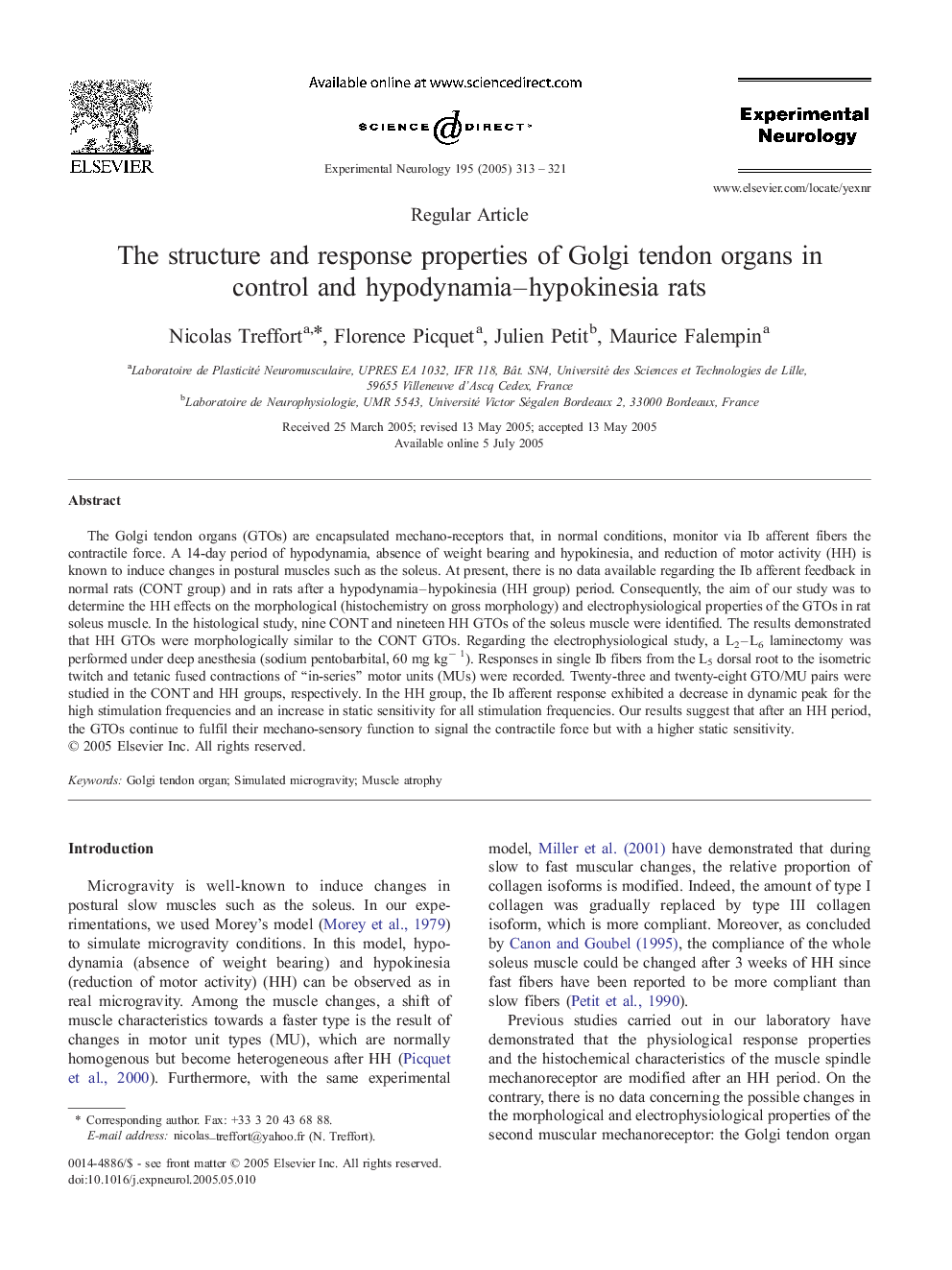| Article ID | Journal | Published Year | Pages | File Type |
|---|---|---|---|---|
| 9191931 | Experimental Neurology | 2005 | 9 Pages |
Abstract
The Golgi tendon organs (GTOs) are encapsulated mechano-receptors that, in normal conditions, monitor via Ib afferent fibers the contractile force. A 14-day period of hypodynamia, absence of weight bearing and hypokinesia, and reduction of motor activity (HH) is known to induce changes in postural muscles such as the soleus. At present, there is no data available regarding the Ib afferent feedback in normal rats (CONT group) and in rats after a hypodynamia-hypokinesia (HH group) period. Consequently, the aim of our study was to determine the HH effects on the morphological (histochemistry on gross morphology) and electrophysiological properties of the GTOs in rat soleus muscle. In the histological study, nine CONT and nineteen HH GTOs of the soleus muscle were identified. The results demonstrated that HH GTOs were morphologically similar to the CONT GTOs. Regarding the electrophysiological study, a L2-L6 laminectomy was performed under deep anesthesia (sodium pentobarbital, 60 mg kgâ1). Responses in single Ib fibers from the L5 dorsal root to the isometric twitch and tetanic fused contractions of “in-series” motor units (MUs) were recorded. Twenty-three and twenty-eight GTO/MU pairs were studied in the CONT and HH groups, respectively. In the HH group, the Ib afferent response exhibited a decrease in dynamic peak for the high stimulation frequencies and an increase in static sensitivity for all stimulation frequencies. Our results suggest that after an HH period, the GTOs continue to fulfil their mechano-sensory function to signal the contractile force but with a higher static sensitivity.
Related Topics
Life Sciences
Neuroscience
Neurology
Authors
Nicolas Treffort, Florence Picquet, Julien Petit, Maurice Falempin,
